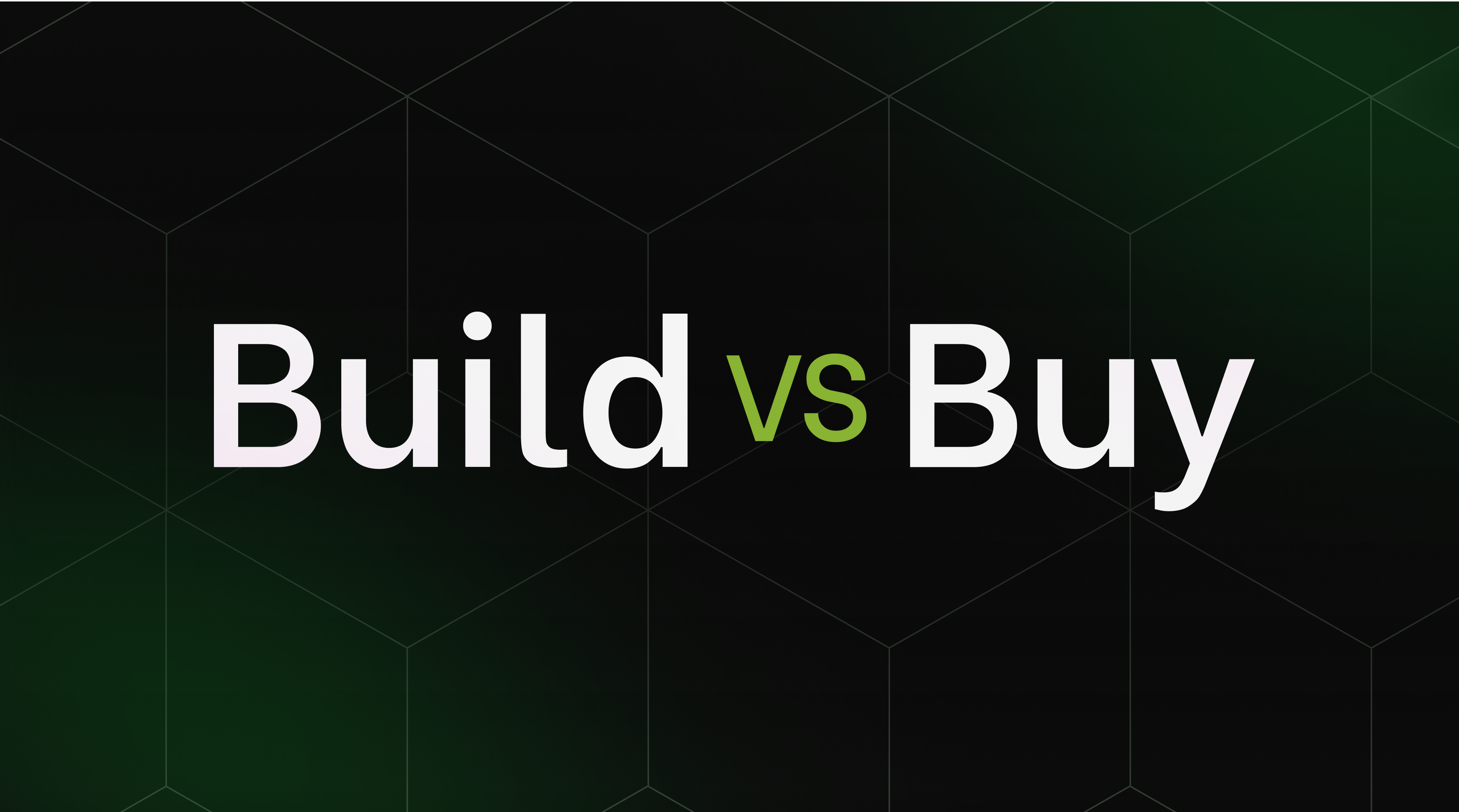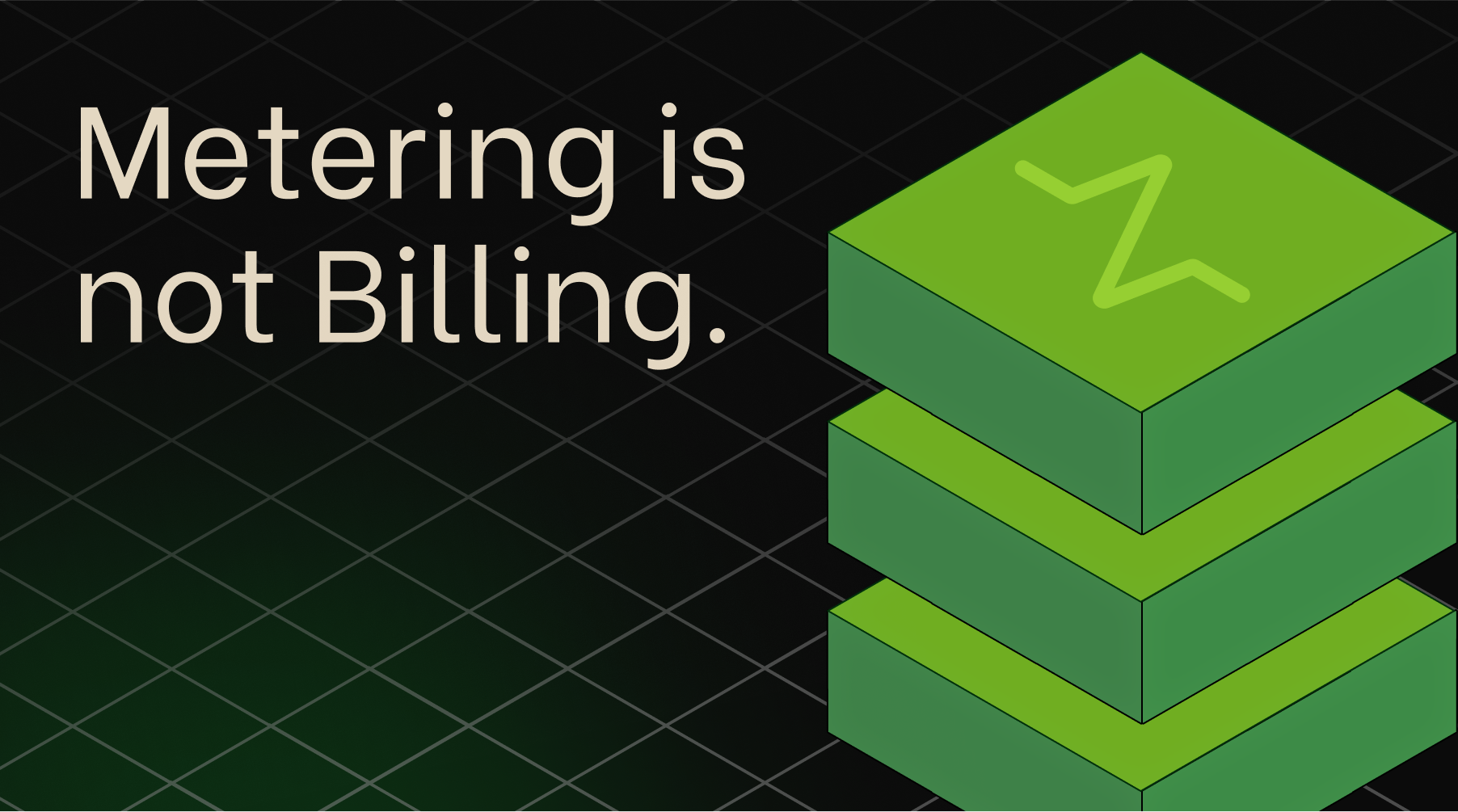You didn't mean to build a monetization system. But now you're maintaining one.
It probably started with a simple script to handle subscriptions. Then came a request for a free trial. Then usage-based billing for a new feature. Soon, sales needed custom enterprise plans, finance wanted to change the billing cycle from anniversary to calendar dates, and the go-to-market team wanted to experiment with new add-ons and upsells. Each request, a seemingly small hack, was layered onto the last.
Now, you're left with a brittle, complex monolith that's deeply entangled with your core application logic. It's the system everyone depends on but no one wants to own. Every change is a fire drill, every deployment a risk. The business needs are evolving faster than ever, driven by new hybrid models and AI-powered products, but the rigid, homegrown monetization infrastructure is holding the entire company back.
This isn't just technical debt; it's orphaned technical debt. Unlike core product features that teams proudly refactor and scale, the monetization system is often a hot potato, a project relegated to the next sprint, and the next, until it breaks. This creates a cycle of fear-driven development, where changes are minimized to avoid catastrophe. The build vs. buy debate for monetization isn't a simple choice; it's a necessary response to an architectural and organizational anti-pattern that's silently killing your team's velocity.
The Hidden Costs of Building Monetization In-House
The initial cost of building a monetization system is a fraction of its total cost of ownership. The real price is paid over years in compounding complexity, maintenance overhead, and the human toll it takes on your engineering team.
Compounding Complexity
What begins as a straightforward subscription model quickly descends into a cascade of architectural challenges. Consider the common requests that seem simple on the surface:
- Hybrid Models: Moving from flat-rate subscriptions to include usage based or hybrid components, like per-seat charges, API call quotas, or data processing fees.
- Upgrades & Downgrades: Handling prorated charges for mid-cycle plan changes is notoriously difficult. What happens when a user upgrades from a monthly to an annual plan? What about downgrades? Getting this wrong leads to revenue leakage, angry customers, and more support tickets.
- Date and Period Logic: Managing trials, leap years, and different billing cycles introduces a surprising amount of complexity and edge cases into the codebase.
- Migrations: When you launch new pricing, you oftentimes can't just migrate everyone. You have to maintain the old logic for legacy customers, meaning you're now supporting multiple, parallel pricing models in your code indefinitely.
- Security and Compliance: A homegrown system makes you solely responsible for robust data security and compliance. A data breach can lead to millions of dollars in financial penalties, reputational damage, and loss of customer trust.
- Scalability and Reliability: As your customer base grows, a system not designed for scale will inevitably break under the load. When your homegrown system goes down, you stop making money. Every minute of downtime means failed charges, interrupted subscriptions, and revenue loss.
Each of these requirements adds another layer to the labyrinth. Soon, your codebase is littered with conditional logic, feature flags, and scattered configurations that make it impossible to answer simple questions without a deep forensic investigation.
Maintenance & Scaling
This complexity translates directly into lost engineering hours. At Webflow, a company operating at significant scale, making simple pricing and entitlement changes took over 8 weeks, consuming more than 500 engineering hours per year in billing-related work alone.
This isn't just a matter of developer time. It's a hidden "velocity tax" on the entire organization. When the GTM team has a new idea and pricing becomes a competitive DISadvantage getting stuck in the engineering backlog, this can have fatal consequences for the business. The lag between idea and implementation isn't just an engineering delay, it's a direct hit to the business's ability to adapt and grow. The cost isn't just the engineering hours spent; it's the opportunity cost of every strategic initiative that is delayed or abandoned because "billing can't support that yet."
The Human Cost
Perhaps the highest cost is the one paid by your engineers. As one developer on Hacker News aptly put it, working on billing is "a situation where you can fail miserably... but there is no success; a functioning billing system is just what is expected. It's all downside and no upside for you personally".
It’s not a prestigious project. It’s a thankless, high-risk maintenance task that distracts from the innovative work engineers joined your company to do. Retaining talent to work on these systems is a constant challenge, leading to under-resourced teams and burnout.
On the Buy-Side: The Myth of Inflexibility
The primary objection engineers have to buying a solution is the fear of being locked into an inflexible black box. This fear is valid, but it’s based on an outdated model. There are many technologies that don’t make sense to build yourself like feature flagging, user authentication, and the like. The old way was to buy a monolithic billing system that dictated your architecture. The new way is different.
The billing monolith is dead. Today’s leading companies are adopting a new architectural pattern: a composable, API-first monetization platform. This isn't about just replacing your billing provider, it's about layering in a flexible middleware that decouples your pricing and packaging logic from your billing and application code.
Think of it this way: for the last decade, engineering teams have been diligently breaking down application monoliths into specialized microservices connected by well-defined APIs. This approach brings resilience, scalability, and independent deployability. A modern monetization platform applies this same philosophy to your entitlements, billings, and the entirety of the GTM stack.
This "unbundled" approach means you are no longer constrained by the limitations of a single provider. You gain a clean, flexible core that orchestrates the entire monetization lifecycle, from the product catalog and entitlements to usage metering and subscription management, without forcing you into a painful "rip and replace" project.
Buying with Flexibility: A Developer-First Approach with Stigg
Buying a modern monetization platform isn't about relinquishing control, it's about gaining leverage. A platform like Stigg is designed from the ground up to be developer-first, providing the architectural flexibility and powerful tooling that engineers need to build and scale robust monetization flows.
Decoupled Architecture, Granular Control
The core architectural concept in Stigg is Entitlements. An entitlement is the answer to the question: "Does this customer have access to this feature, and under what conditions?" By abstracting pricing and packaging logic away into a centralized entitlement system, you remove it from your application's codebase.
Your code no longer needs messy if-else trees to check if a user is on a "Pro Plan" or a "14-day trial." Instead, you make a clean API call, or use the Sidecar SDK for low-latency entitlement checks:
// Check if the customer can access the feature and has enough usage quota
const entitlement = stiggClient.getMeteredEntitlement({
featureId: "feature-ai-reports",
options: { requestedUsage: 1 }
});
if (entitlement.hasAccess) {
// Grant access to the feature
}
This simple check is all your code needs to know. The complex logic of whether the user has a free trial, a promotional credit, a paid subscription, or a custom enterprise deal is managed within Stigg and can be changed without requiring a new deployment.
It's Not a Black Box, It's a Better Toolbox
Stigg provides production-grade tooling needed to integrate, manage, and scale your monetization infrastructure with confidence.
- APIs & SDKs: With a flexible GraphQL API and SDKs for Node.js, Python, Go, and React, Stigg meets your team where they are, fitting into your existing tech stack.
- Stigg Sidecar SDK: For high-performance, latency-sensitive applications, Stigg offers a sidecar service. This acts as a local proxy that provides low-latency entitlement checks, intelligent caching, and real-time updates, minimizing network dependency and reducing the resource footprint on your main application.
- DevOps & GitOps: You can manage pricing changes as code using Stigg's CLI and promote changes between development, staging, and production environments, integrating monetization updates directly into your existing CI/CD workflows.
Solving the Hard Problems You Don't Want to Build
Stigg comes with out-of-the-box solutions for the most challenging parts of a monetization system:
- Usage Metering at Scale: A highly available Metering API that handles thousands of events per second with built-in idempotency to prevent duplicate charges.
- Embeddable Widgets: Pre-built, customizable widgets for pricing pages, checkout flows, and customer portals that can save your frontend team weeks of development time while still allowing for full styling control to match your brand.
- Versioned Product Catalog: Natively supports plan versioning and grandfathering legacy customers. This allows you to adapt to market changes and launch new pricing models quickly and safely, without disrupting existing customers or building complex migration logic from scratch.
- Subscription Management: Provides robust capabilities to manage the entire subscription lifecycle, from self-serve upgrades and downgrades to complex enterprise subscriptions. Stigg can handle migrations for millions of subscriptions in seconds, a complex operation you no longer have to build or fear.
The Proof: From Quarters to Hours at Webflow
The impact of this approach is not theoretical. When Webflow replatformed their strained, homegrown system to Stigg, the results were transformative.
- Before Stigg: Their architecture was a tangled web of manual configurations, error-prone sync logic, and tightly coupled services. Launching a single add-on took months.
- After Stigg: With a centralized, API-driven entitlement model, their monetization speed improved dramatically.
- Add-on rollout: Went from months → 4 hours.
- Usage-based pricing: Went from quarters → a few weeks.
- Marketplace rollout: From blocked→ shipped.
As Utkarsh Sengar, Senior Director of Engineering at Webflow, stated, "It's honestly empowering for everyone... engineering doesn't feel like the bottleneck anymore—we're actually enabling pricing and packaging to move faster".
Ultimate Flexibility: Bring Your Own Solution (BYOS)
To address the final fear of vendor lock-in, Stigg offers a "Bring Your Own Solution" (BYOS) model. You can use Stigg's powerful UI to model your product catalog and manage subscriptions, while streaming all monetization events via webhooks to a replica database that you own and control. This allows you to build your own entitlement enforcement service on top of Stigg's data, ensuring you never have to depend on Stigg's API availability for mission-critical access checks.
Reclaim Your Roadmap, Acquire Leverage
Continuing to build and maintain a homegrown monetization system is a choice to accept a permanent velocity tax on your business. It's a commitment to spend your most valuable resource, your engineering talent, on solving problems that are not unique to your product. It’s undifferentiated heavy lifting.
The modern "buy" decision is not about giving up control or accepting defeat. It's about acquiring leverage. It's about swapping a brittle, high-maintenance internal system for a flexible, scalable, and resilient monetization infrastructure. It frees your team from being a bottleneck and empowers them to focus on the core product innovations that drive your business forward.
As one engineer at PagerDuty put it, "I think all things are possible through the power of Stigg". It's time to stop maintaining the accidental monetization system you’ve built and reclaim your roadmap. Book a demo with our team today to learn more.




